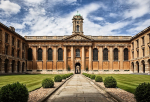Media
-
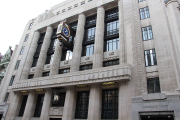 Daily Mail owner agrees £500m deal to acquire Telegraph titles
The publisher of the Daily Mail has struck a £500 million agreement to buy the Telegraph newspapers, bringing an end to months of uncertainty over the titles’ future ownership.22 November 2025Read More...
Daily Mail owner agrees £500m deal to acquire Telegraph titles
The publisher of the Daily Mail has struck a £500 million agreement to buy the Telegraph newspapers, bringing an end to months of uncertainty over the titles’ future ownership.22 November 2025Read More... -
 BBC reports £1.1bn loss as licence fee income falls amid viewer exodus
The BBC has recorded a £1.1 billion loss as growing numbers of viewers either cancel or fail to pay the TV licence fee, according to a new parliamentary report.21 November 2025Read More...
BBC reports £1.1bn loss as licence fee income falls amid viewer exodus
The BBC has recorded a £1.1 billion loss as growing numbers of viewers either cancel or fail to pay the TV licence fee, according to a new parliamentary report.21 November 2025Read More... -
 Trump says he still plans to sue BBC, despite its apology
Donald Trump says he’s moving forward with legal action against the BBC next week, even though the broadcaster has already apologised for misleadingly editing one of his speeches.15 November 2025Read More...
Trump says he still plans to sue BBC, despite its apology
Donald Trump says he’s moving forward with legal action against the BBC next week, even though the broadcaster has already apologised for misleadingly editing one of his speeches.15 November 2025Read More... -
 BBC apologises to Trump for edited Panorama clip — but says it won’t pay damages
The BBC has apologised to US President Donald Trump after a Panorama episode stitched together parts of his 6 January 2021 speech in a way that could imply he was directly calling for14 November 2025Read More...
BBC apologises to Trump for edited Panorama clip — but says it won’t pay damages
The BBC has apologised to US President Donald Trump after a Panorama episode stitched together parts of his 6 January 2021 speech in a way that could imply he was directly calling for14 November 2025Read More... -
 ‘We’ve got to fight for our journalism,’ BBC director general tells staff amid Trump lawsuit threat
BBC Director General Tim Davie has urged staff to “fight for our journalism” after former US President Donald Trump threatened to sue the corporation for $1 billion (£760 million) over a12 November 2025Read More...
‘We’ve got to fight for our journalism,’ BBC director general tells staff amid Trump lawsuit threat
BBC Director General Tim Davie has urged staff to “fight for our journalism” after former US President Donald Trump threatened to sue the corporation for $1 billion (£760 million) over a12 November 2025Read More...

Culture
-
 Earliest evidence of human fire-making unearthed in Suffolk
A team led by the British Museum has uncovered what is now the earliest known evidence of humans deliberately making fire—dating back around 400,000 years—at a site in Barnham,Read More...
Earliest evidence of human fire-making unearthed in Suffolk
A team led by the British Museum has uncovered what is now the earliest known evidence of humans deliberately making fire—dating back around 400,000 years—at a site in Barnham,Read More... -
 Rothschild 15th-century prayer book set to fetch up to $7 million at Sotheby’s auction
Ultra-rare 15th-century mahzor features vivid medieval illustrationsRead More...
Rothschild 15th-century prayer book set to fetch up to $7 million at Sotheby’s auction
Ultra-rare 15th-century mahzor features vivid medieval illustrationsRead More... -
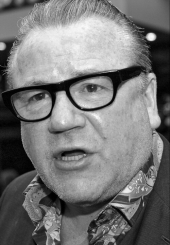 Ray Winstone honoured with Freedom of the City of London
Ray Winstone, one of the UK’s most celebrated ‘hard man’ actors, has been awarded the Freedom of the City of London in recognition of his extensive charitable and fundraising work.Read More...
Ray Winstone honoured with Freedom of the City of London
Ray Winstone, one of the UK’s most celebrated ‘hard man’ actors, has been awarded the Freedom of the City of London in recognition of his extensive charitable and fundraising work.Read More... -
 Golden Globe 2026 nominations announced ahead of January ceremony
The nominations for the 83rd annual Golden Globe Awards were unveiled on Monday, setting the stage for the first major awards ceremony of the season on January 11.Read More...
Golden Globe 2026 nominations announced ahead of January ceremony
The nominations for the 83rd annual Golden Globe Awards were unveiled on Monday, setting the stage for the first major awards ceremony of the season on January 11.Read More... -
 Mayor of London granted right to use historic GLC coat of arms
The Mayor of London has been officially granted permission to use the historic coat of arms once belonging to the former Greater London Council (GLC), following approval from the King.Read More...
Mayor of London granted right to use historic GLC coat of arms
The Mayor of London has been officially granted permission to use the historic coat of arms once belonging to the former Greater London Council (GLC), following approval from the King.Read More... -
 Who will shape the National Gallery’s tomorrow? Architects shortlisted for landmark expansion
The National Gallery has announced a shortlist of six architectural teams competing to design a major new wing as part of its ambitious £750 million Project DomaniRead More...
Who will shape the National Gallery’s tomorrow? Architects shortlisted for landmark expansion
The National Gallery has announced a shortlist of six architectural teams competing to design a major new wing as part of its ambitious £750 million Project DomaniRead More... -
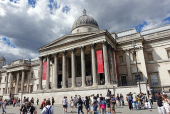 National Gallery unveils ambitious exhibition programme for 2026
The National Gallery has announced a landmark line-up of exhibitions for 2026, spanning five centuries of European art and bringing together rare loans, first-ever UK presentations, and iconicRead More...
National Gallery unveils ambitious exhibition programme for 2026
The National Gallery has announced a landmark line-up of exhibitions for 2026, spanning five centuries of European art and bringing together rare loans, first-ever UK presentations, and iconicRead More... -
 OUP India launches 100 libraries for underprivileged children across Uttar Pradesh
Oxford University Press (OUP) India has partnered with the National Book Trust (NBT) to establish 100 libraries for underprivileged children across Anganwadi centres inRead More...
OUP India launches 100 libraries for underprivileged children across Uttar Pradesh
Oxford University Press (OUP) India has partnered with the National Book Trust (NBT) to establish 100 libraries for underprivileged children across Anganwadi centres inRead More... -
 Children’s author Iryna Kotlyarevska: “Stories born from family evenings”
Iryna Kotlyarevska is a name increasingly found on the shelves of family libraries. A mother of four, a Bachelor of Philosophy, a Master of Political Science, and the creator of the worlds ofRead More...
Children’s author Iryna Kotlyarevska: “Stories born from family evenings”
Iryna Kotlyarevska is a name increasingly found on the shelves of family libraries. A mother of four, a Bachelor of Philosophy, a Master of Political Science, and the creator of the worlds ofRead More... -
 Ashmolean Museum passes one million visitors for first time since 2008
The Ashmolean Museum in Oxford has recorded more than one million visitors in a single year, the first time it has reached the milestone in 16 years, the institutionRead More...
Ashmolean Museum passes one million visitors for first time since 2008
The Ashmolean Museum in Oxford has recorded more than one million visitors in a single year, the first time it has reached the milestone in 16 years, the institutionRead More... -
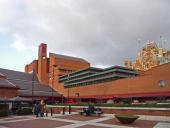 Writer’s Award 2026 honours Jacqueline Crooks and Vanessa Londoño
Jacqueline Crooks and Vanessa Londoño have been named the 2026 recipients of the Eccles Institute and Hay Festival Global Writer’s Award. The announcement was made Monday evening atRead More...
Writer’s Award 2026 honours Jacqueline Crooks and Vanessa Londoño
Jacqueline Crooks and Vanessa Londoño have been named the 2026 recipients of the Eccles Institute and Hay Festival Global Writer’s Award. The announcement was made Monday evening atRead More... -
 At Britain’s first plant-based Michelin-Star restaurant, most diners aren’t vegan
At Plates, the first fully plant-based restaurant in Britain to earn a Michelin star, the dining room is full most nights — yet the vast majority of guests aren’t vegan.Read More...
At Britain’s first plant-based Michelin-Star restaurant, most diners aren’t vegan
At Plates, the first fully plant-based restaurant in Britain to earn a Michelin star, the dining room is full most nights — yet the vast majority of guests aren’t vegan.Read More...
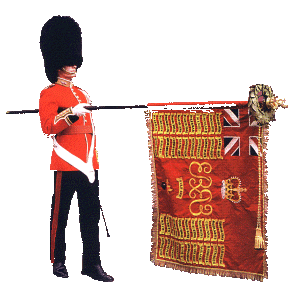
British Queen celebrates
Most Read
- Teen held after US woman killed in London stabbings
- Heave-ho Harry! Prince prepares to join the walking wounded in ice trek to North Pole
- Football: Farhad Moshiri adamant Everton deal above board
- "Master of English Style". Interview with Designer Lydia Dart
- Letter to the Financial Times from Lord Mayor Alderman Michael Bear
Culture

The Mayor of London, Sadiq Khan, has today announced a new investment of nearly £3m to boost his successful Creative Enterprise Zones (CEZ) programme.

The Mayor of London, Sadiq Khan has today announced funding for innovative projects all across the capital aimed at ensuring London’s high streets can flourish and thrive as we emerge from

The Mayor of London, Sadiq Khan, has today announced he is investing a further £1.8m in a programme that has provided nearly 400 young people with a positive way out of county lines

Portraits of Londoners, including key workers and school children, will be among thousands of faces adorning roads and buildings across London later this month, as

It is probable that we have missed something, reassessed something and started to look in a different way at usual things and events in connection with the "plague of the XXI century"

The National Gallery today announced the acquisition of Portrait of a Girl (about 1650) by Isaack Luttichuys (pronounced ‘Lootickhouse’) (1616–1673), the first work by

The Queen has approved that His Royal Highness The Duke of Cambridge and Earl of Strathearn KG KT be appointed as Her Majesty’s Lord High Commissioner to the General Assembly of the

Fans of J.K. Rowling's "Fantastic Beasts" will already be familiar with nifflers, occamy and demiguise while unicorns, dragons and mermaids have been the stuff of legends for centuries.

Many people struggled with the coronavirus lockdown but for designers Victoria Beckham and Emilio de la Morena, showing at London Fashion Week on Monday, it was a source of inspiration.

Seven-time world champion Stephen Hendry, aged 51, announced on Tuesday that he will come out of retirement to play the next two seasons on the World Snooker Tour.












